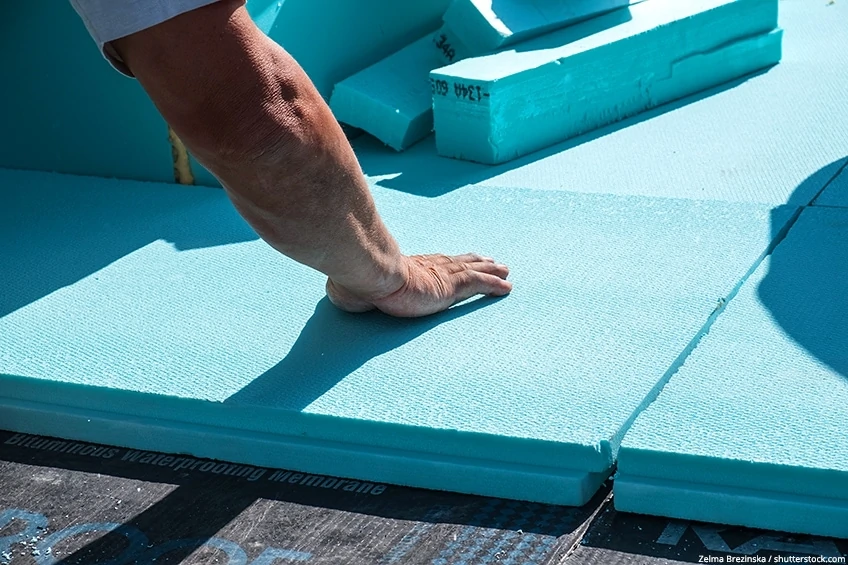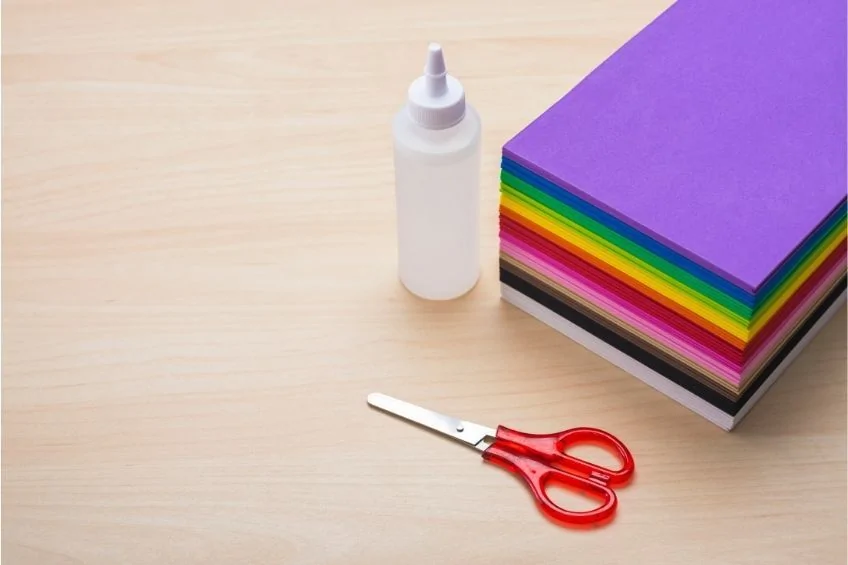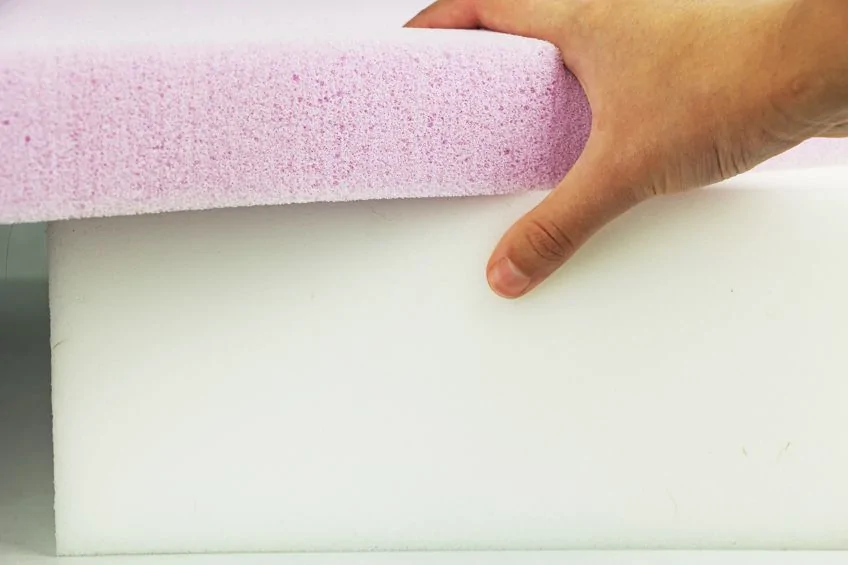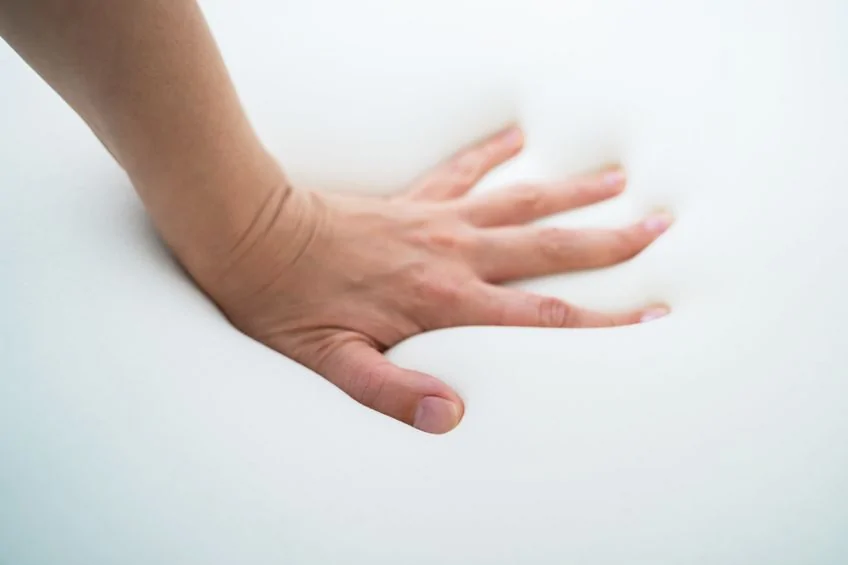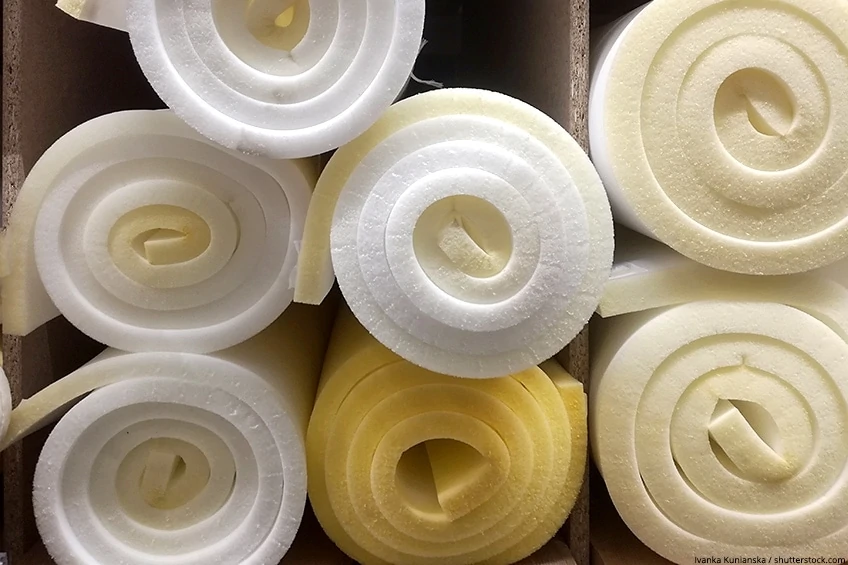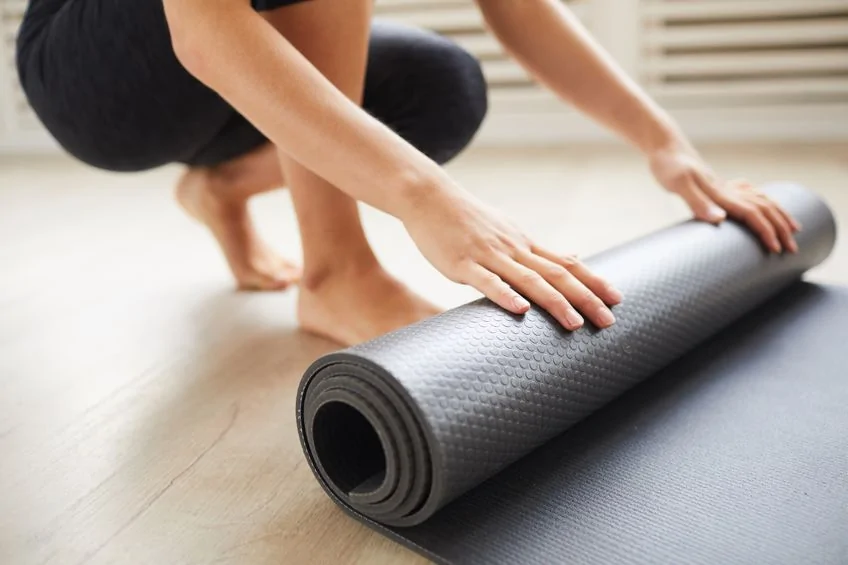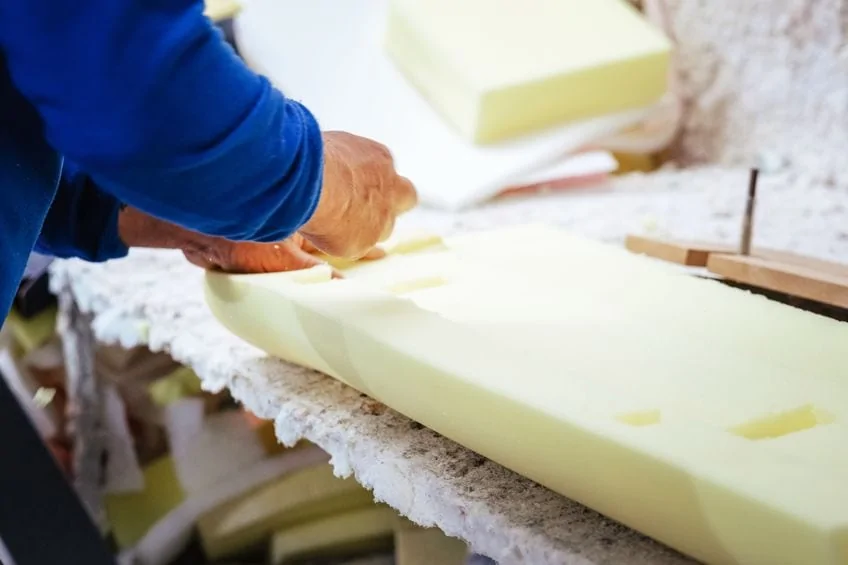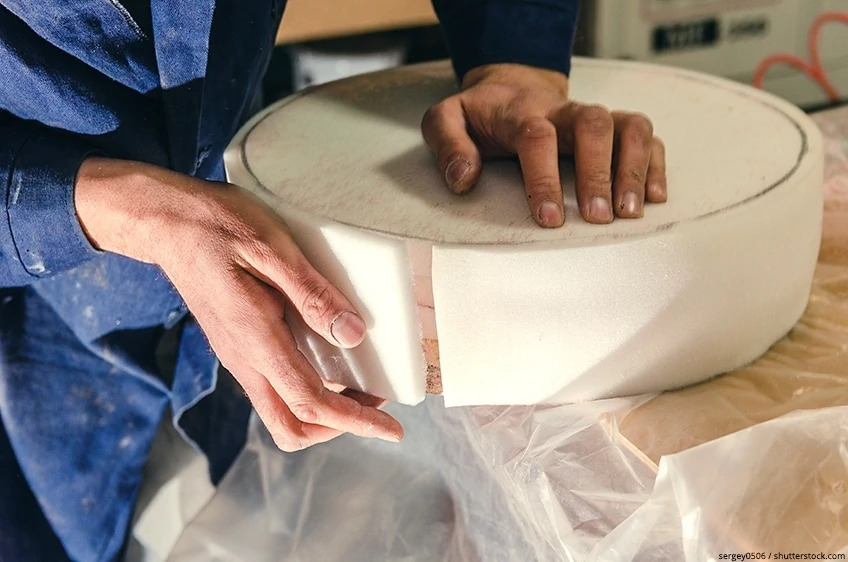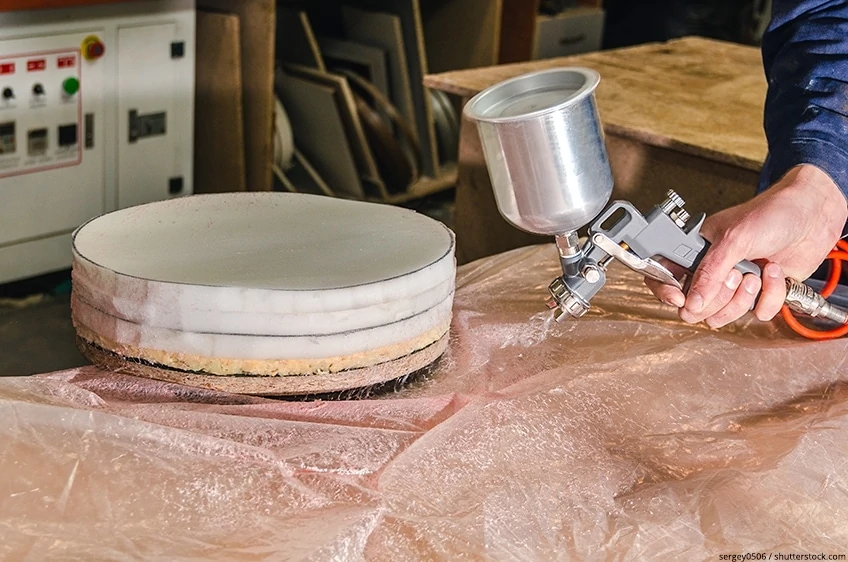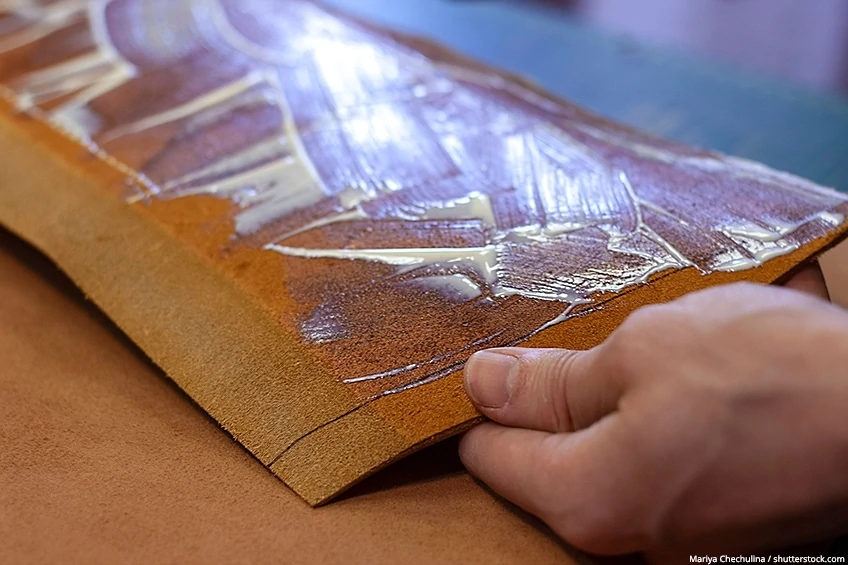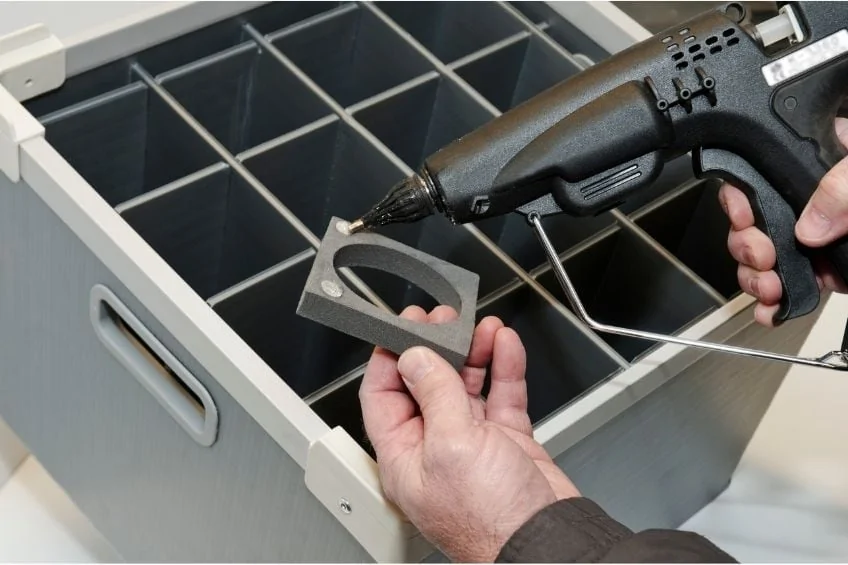Best Glue for Foam – Your Complete Guide to Using Foam Adhesives
This post may contain affiliate links. We may earn a small commission from purchases made through them, at no additional cost to you. You help to support resin-expert.com
Foam materials feature in almost every part of our everyday life and at some point, all of us come up against the problem of how to glue foam. The question of how to use foam glue does not have a simple answer, as there are many different types of foam and glue available. Foams are manufactured from a diverse range of plastics and the particular type you intend to glue will require a specific type of foam adhesive. In this article, we explore the different types of foam adhesives and explain how to use them.
Table of Contents
What Are the Different Types of Foam?
Foam is almost everywhere; in the upholstery of sofas and bed headboards, in cushions or bumper cores of cars. It serves as heating insulation, footfall sound insulation, and packaging material. Each of these functions requires a different type of foam. There are many different types, including charcoal, high-density, latex, memory, dry fast, lux, polyurethane, and closed-cell foams. Let us take a brief look at each of these foam types in a little more detail.
Charcoal Foams
This type of foam is incredibly diverse and you are sure to have come across it before in your daily life. When buying and storing electronics like computers, cameras, and guns, you will find that the cases are lined with charcoal foam.
It is also often used for shipping, soundproofing, and packaging.
High-Density Foams
Typically used in mattresses, sofas, cushions, boats, and camping equipment, this industrial-grade foam is of medium quality. If you are wanting to repair a sofa or any other furniture foam, then it is likely that you will need to find an adhesive that is suitable for this type of foam.
Dry Fast Foams
When dealing with outdoor objects that have foam filtering or padding, you will typically find that they are made with dry fast foam. This foam does not absorb water and does not rot or get mold and mildew.
The open-cell structure is very resilient and buoyant.
Memory Foams
Luxurious beds and pillows that mold to your shape and support every part of your body while you sleep are made from memory foam. This high-quality foam was originally developed for seating in space shuttles.
Latex Foams
While high-density foams tend to be used primarily in lower-quality furnishings, latex foam is typically used in higher-end products.
Top-of-the-line pillows, cushions, and mattresses are often made from this long-lasting and non-allergenic foam product.
Lux Foams
Just like dry fast foam, lux foam is very buoyant. Used for higher-quality mattresses and furniture, this foam is very long-lasting.
Polyurethane Foams
This industrial foam is one of the lowest qualities and tends to be used primarily for packing, dog beds, fill, costumes, and mattress toppers. If used for furnishings, this foam will soon begin to develop sink areas from the pressure.
This wear will not return to its original form over time.
Closed-Cell Foams
If you are working with exercise mats, mechanical box linings, hot tub covers, and aerobic equipment that deals with high impacts, then you are typically dealing with closed-cell foam. This non-biodegradable and non-water absorbent foam has high tensile strength and floats.
The Best Glue for Foam Guide
As you will now be aware, there are many different types of foam, and the type of adhesive that you need is going to vary depending on your application. Here, we have gathered together our top three recommendations for foam adhesives. Each of these three foam glue recommendations is of a different form and requires different application methods. We will outline these methods in the next section.
The Best Spray Foam Adhesive: 3M Foam Fast Spray Adhesive
Spray adhesives are real all-rounders and therefore not only suitable for foam bonding, but also for bonding many other materials. What’s more, spray adhesive is just as suitable for particularly large surfaces as for small substrates. The simple application virtually at the push of a button saves the user a lot of time and effort.
Spray adhesives are also suitable for bonding different materials. So it is no problem to glue foam on wood or also on GFK, concrete, or different metals. The aerosols contained in the spray adhesive ensure the perfect distribution of the adhesive. Please note the flash-off time, which is several minutes depending on the manufacturer.
- Specially designed for foams and fabrics
- The adhesive dispenses with a lace-spray pattern
- The glue bonds surface together quickly
PROS
- Adheres quickly
- Safe
- Versatile
- Can bond foam to many surfaces
- Resists weather and aging
- Durable and very long-lasting
- Inconspicuous once dried
- Very little spray mist
CONS
- May be harmful to the environment
- Spray mist cannot be completely avoided
The Best Foam Adhesive: BEACON Hold The Foam
Special adhesives for foams are those that have been specially developed for joining foams. They are generally suitable for many different types of foam. Especially in the upholstery sector, they are often used, but also in the hobby and craftsman sector. If you want to use a special adhesive for foam, we would advise you to use BEACON Foam Rubber Adhesive. This offers many advantages, which will be especially useful when bonding foam rubber.
- Bonds all forms of foam together and with other materials
- Non-toxic and can be easily cleaned with water
- Bonds foam to other materials instantly and dries quickly
PROS
- Comes with an application brush
- Temperature resistant
- Washable
- Can bond foam to many surfaces
- Resists water, oil, and acids
- Highly elastic and soft
- Suitable for many foam types
CONS
- Has a strong odor
- Needs to be used outside with a mask
The Best Contact Cement for Foam: WELDWOOD Original Contact Cement
Contact adhesive is a particularly strong type of adhesive that forms highly resilient connections. With contact adhesive, even the bonding of different materials is no problem. Therefore, if you want to bond foam to wood, for example, you should use such an adhesive for foam rubber. We can recommend the Foam Adhesive from Weldwood, which was originally designed for the upholstery industry. The Weldwood contact cement is delivered in a practical tin and offers many advantages.
- Rubber adhesive that forms instant, high strength bonds
- Suitable for a variety of different surfaces and foam types
- Forms strong bonds on contact without clamps and fastners
PROS
- Simple application
- Suitable for bonding to many materials
- The seam remains elastic and soft
- Can be applied on only one side
- Forms a strong and durable bond
CONS
- Fumes may be damaging
A Guide to Applying Different Forms of Foam Adhesive
Foam adhesive is used wherever foam must be fixed permanently and durably. These can be for example thermal insulation boards in walls or also ceilings of houses. A special fire protection adhesive is often recommended for such applications, especially if the building is a school, hospital, or kindergarten. There are also special acoustic foams available, which offer a particularly high level of sound insulation.
If textiles are to be bonded to foam, spray or spread adhesives can be used. It is important to apply a very thin layer of adhesive to avoid unsightly stains on the textiles. The same type of adhesive is also perfect if you want to glue foam on foam. In cases where heavy bonding is needed, we strongly recommend an assembly adhesive. These can be used if you need to bond together heavy foam boards in a large area.
Surface Preparation
Preparation of the surface is essential when bonding any material. First of all, they should be free of all dirt. Thoroughly remove dirt, dust, and oil and grease residues. This also includes finger grease! Do not touch the surfaces to be bonded with bare fingers after cleaning, but use disposable gloves. The substrates should also be absolutely dry.
First test on an inconspicuous and small area to see if the foam used holds adhesive. Only then should the actual bonding be carried out.
The Application of Spray Adhesive
The application of spray glue is really a piece of cake. First, the surfaces are thoroughly cleaned and, if necessary, depending on the material, roughened. Then the spray adhesive is simply sprayed onto the substrates, making sure that it is applied thinly but evenly.
Spray adhesive usually works by the contact bonding method; this means that it is applied on both sides. However, there are also those available that are applied on one side only. Spray the adhesive over the entire surface from a distance of about 25 cm. Then join the two substrates together and fix them in place if necessary. Fixing is not a must, as the adhesive adheres very quickly
The Application of Contact Adhesive
Contact adhesive is, as the name suggests, applied using the contact bonding process. This means that the adhesive is applied thinly but evenly on both sides. Afterward, a certain flash-off time has to be observed, which depends on the manufacturer’s instructions. Usually, it is about ten minutes. When the adhesive feels dry, you can join the two substrates by applying very firm pressure. Fixing is normally not necessary. Pay attention to accuracy, because errors cannot be corrected afterward.
You should first test this bonding method in inconspicuous places to avoid errors.
The Application of Foam Adhesive
Foam adhesives are usually applied with a brush. Some types can also be spread with a spray gun, which at the same time produces a particularly fine but also even application. Then both substrates are joined together with high pressure and possibly fixed.
Tips and Tricks on How to Glue Foam Together
- When bonding foam rubber, it must be ensured that the foam is porous and highly absorbent or solid and not or hardly absorbent. Depending on the material, a different adhesive must be used.
- When bonding foam, the shape is also important: Since foam is elastic, there are shapes that are particularly difficult to glue. These are usually very large foam sheets.
- For very small shapes, a double-sided adhesive tape or hot glue is sometimes sufficient, especially if the bonding is only temporary. However, if the bonding has to withstand greater loads, it is always recommended to use a special adhesive for foam.
- If you are a lover of loud music, you can do the neighbors a favor and soundproof your music room by placing foam pyramid panels on the walls. The best way to do this is with spray glue because each pyramid board has a relatively large surface area.
- After cleaning, the adhesive is applied to the surfaces and these are joined together with high pressure. Then, depending on the type of adhesive used, they are fixed for a while.
- It is better to let the glue dry a little longer than indicated. This will make sure that you are on the safe side and prevent your hard work from crumbling.
With all the different types of foam and different foam adhesives available, it can be a little overwhelming to know where to start. After reading this article, you should have all the knowledge and skills necessary to fix a range of different foam items with ease and confidence.
Frequently Asked Questions
What Is the Best Use of Epoxy Foam Adhesives?
If you want to glue foam, you can in principle also use epoxy resin glue. This consists of two components that react with each other when they are brought together. This results in an extremely durable and permanent bond. However, this fact is a particular disadvantage in the case of foam bonding, because the very high strength of the adhesive used can cause the foam to tear under high loads or rapid movement. Therefore, it is better to use a specially designed adhesive for foam.
How do You Use Self-Adhesive Foam Sheets?
If you want to line large surfaces with foam, for example as acoustic or thermal insulation in houses, you can use self-adhesive foam panels. Nowadays a huge range of such self-adhesive foam panels is available in the trade. Such panels work by means of an adhesive film on the back. Simply peel off the protective film on top and attach the plates. Before doing so, the adhesive surface of the second substrate must of course be cleaned of all dirt, dust, oil, and grease residues to improve adhesion.
How to Remove Adhesive from Foam?
If you want to remove glue from foam, we recommend using a hot air blow dryer. Heat the material evenly and carefully remove the adhesive. However, pay attention to the vapors released during this process! For your personal safety, wear a breathing mask and protective goggles. If possible, work outdoors or in a well-ventilated workplace.


